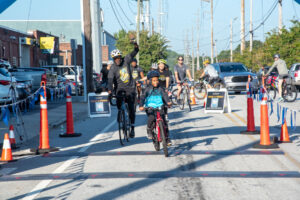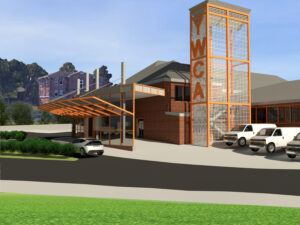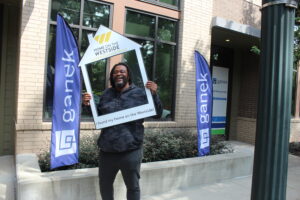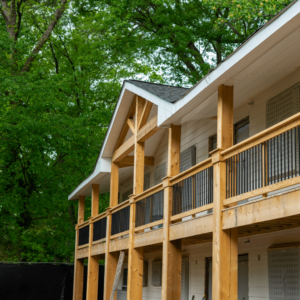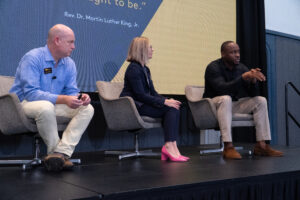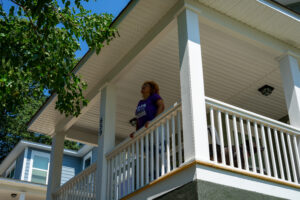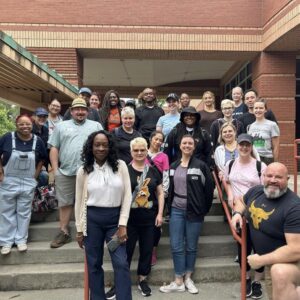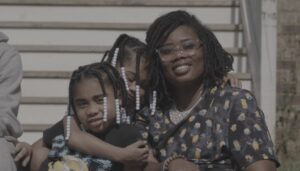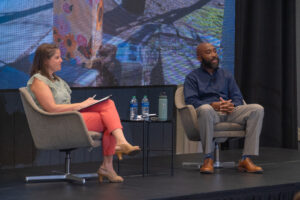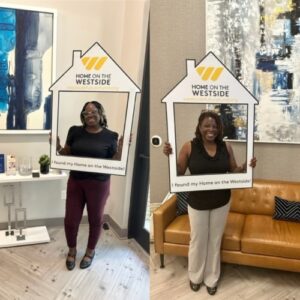In a pivotal moment for the YWCA of Greater Atlanta, a 121-year-old institution dedicated to supporting women and their families, the organization’s leadership chose Danita V. Knight as its President and Chief Executive Officer last fall. Knight, who succeeded the retiring Sharmen Gowens, started with the organization in January, and is now nine months into her new role.
Knight has a long history of deep-rooted involvement in Atlanta’s civic circles, underscoring her dedication to community improvement. She has formerly served as Board Chair of the Atlanta Women’s Foundation, participated as a “seed funder” to bring the WNBA Dream to Atlanta, and is Vice Chair of the Brookhaven Social Justice, Race, and Equity Commission. “I have focused on bringing attention to the needs of women and girls for most of my life, either intentionally or just because it was the right thing to do,” said Knight. “This work is a personal ministry of mine that I am committed to for life.”
Knight comes to the YWCA of Greater Atlanta at a critical time for the organization as it works to expand and optimize its program offerings and locations, including the reopening of the historic Phillis Wheatley YWCA in the Historic Westside in collaboration with Westside Future Fund, CHRIS 180, Families First, Morehouse School of Medicine, and YMCA of Metro Atlanta. As of today, the organization is planning to reopen the facility by 2025, and well on its way with over $5.5 million raised of their $19.5 million campaign goal. “By virtue of bringing back the Phillis Wheatley Westside YWCA, we will be solely dedicated to serving the needs of women and their families in the Westside,” said Knight. “The concept is to work with our collaborators to provide wraparound services to women and their families, with the goal of tending to the needs of the “whole woman.” This unique approach is extremely exciting because we are focusing on an area of Atlanta where between 50 and 60 percent of women are heads of households, and that same percentage lives at or below the poverty line.”
The building that once housed the Phillis Wheatley YWCA has been shuttered since 2015. Before that time, it was used as an early learning center, a school, and a women’s shelter. During its days as a YWCA, the Phillis Wheatley building served as a social and civic gathering place for Black Atlantans and provided space for essential services advancing the health and education goals of Westside residents. Since its closing, those services largely dissipated from the community, contributing to a lack of key social support resources in the historic Westside for women and their families.” Data and research show that there is a void of services in the Westside for women and their families,” said Knight. “Additionally, we have gone out and talked to women on the Westside to ask, ‘what do you need?’ The model that we have produced – the wraparound services model – is the result of those conversations. We need to ensure that we are creating something that has been affirmed by women on the Westside of Atlanta.”
The YWCA of Greater Atlanta offers a comprehensive list of programs and services to women. Four core programs form the essence of their mission, ensuring that women and children have access to the health and education resources they need from the earliest days of their youth well into adulthood. The YWCA Early Learning Academy (ELA), which Knight says is often “mistaken” for a daycare center, offers children far more than just a place to stay while their parents are working. “Our ELA Academy is a place of preparation,” said Knight. “We accept children from six weeks to five years of age. By the time our children leave for kindergarten, they are reading, writing, and ready to excel,” said Knight. “When the Phillis Wheatley YWCA reopens in 2025, we will be able to offer 85 slots to families for their children on the West side of Atlanta, 68 of whom will receive tuition assistance on a sliding scale based on need.”
Women advance their professional skill sets in the Digital Skills Academy (DSA). This eight-week program provides women ages 18 to 40, and in some cases older, with essential digital knowledge and skills that can be applied to empower their lives; and enhance their careers. “Program participants receive laptops, hotspots, headshots, resume and career support, financial literacy, and follow-up guidance after they move on from the program,” said Knight. “There is also a ‘ripple effect,’ where graduates of this program become mentors to incoming students, the next cohort. We have had so many success stories and living-wage job placements thanks to this program.”
That same age group of women may also participate in EncorePlus, a wellness initiative focused on providing underinsured Black and Latina women with breast health education and access to diagnostic services, including mammograms. This year alone, more than 500 women across Atlanta participated in this program.
The Georgia Women’s Policy Institute provides participants with the education and resources to make a difference in their communities as public policy advocates – on behalf of women and their families. Women from around the state come together each year to participate in one of two cohorts: Economic Empowerment and Education or Reproductive Justice. By the end of these sessions, participants are prepared to effectively address issues with elected officials and advocate on behalf of women and their families locally, at the statehouse, and nationally.
Knight says that there are plenty of ways for people to support the YWCA’s mission of eliminating racism and empowering women. “We have had so many people say, ‘I see what you are doing in the community and want to volunteer. We are enhancing our volunteer process so that people may have multiple options. At the end of the day, everyone may contribute to our work. Please visit our website and reach out to me, or any of our team members,” said Knight. “We do not take your calls or emails for granted and will follow up. There is space at our table for everyone.”
To learn more about the YWCA of Greater Atlanta, visit https://ywcaatlanta.org/.

